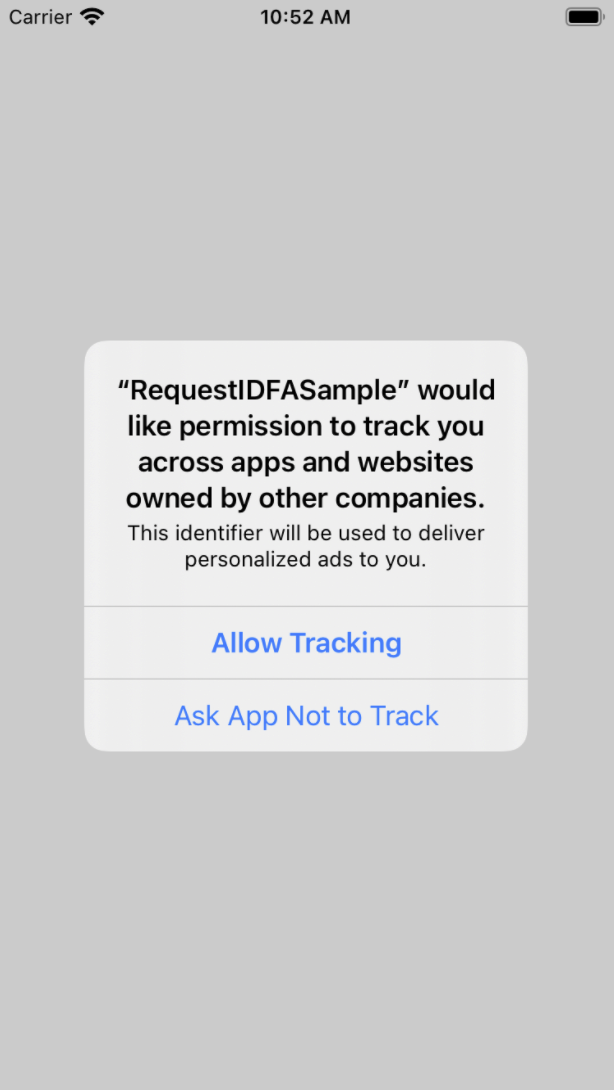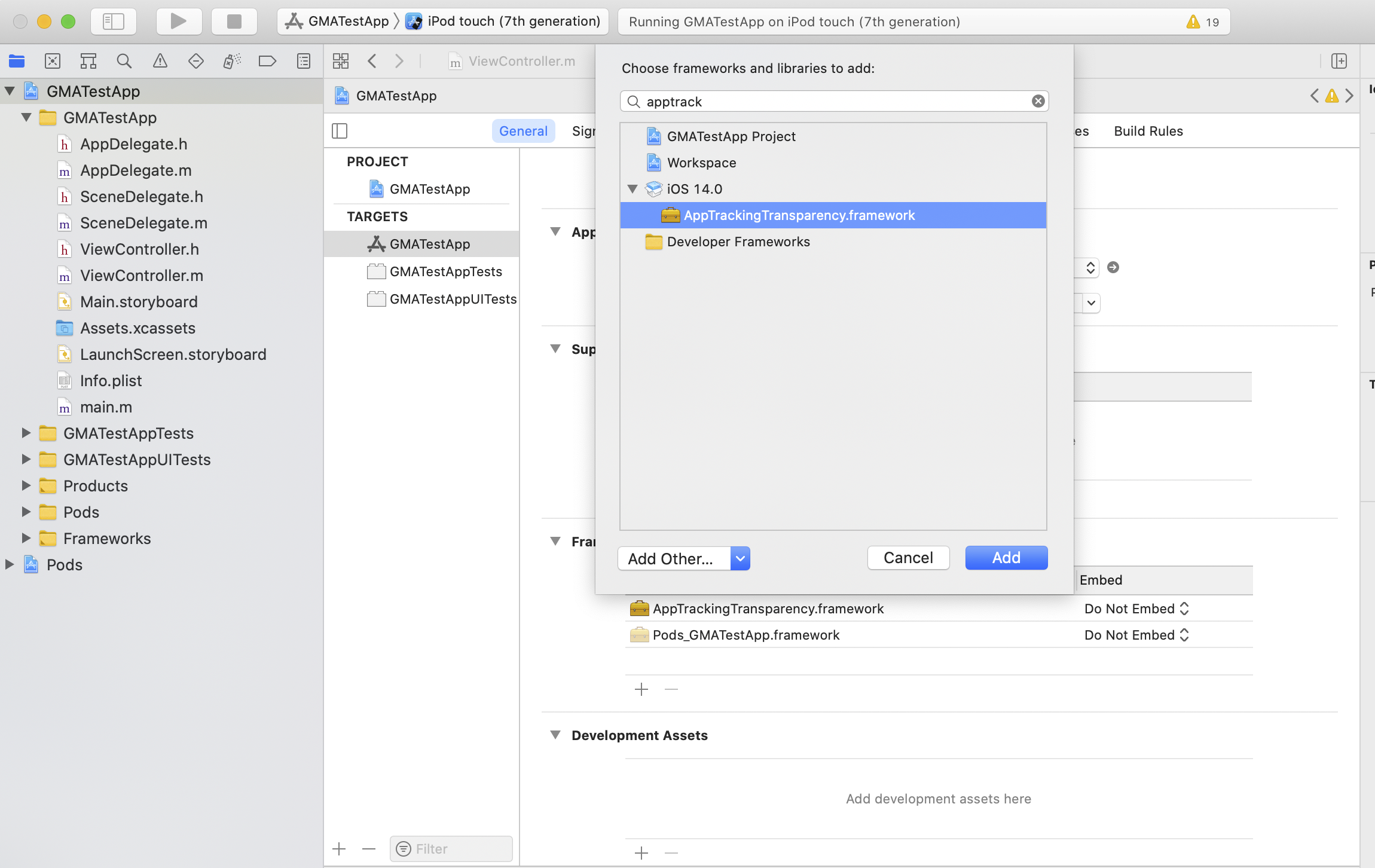ה-User Messaging Platform (UMP) SDK מאפשר להציג למשתמשים הודעה בנושא IDFA לפני שמבקשים מהם הסכמה לשקיפות במעקב באפליקציות (ATT). בהודעה בנושא מזהה עבור מפרסמים (IDFA) מוצג למשתמשים הסבר על אופן השימוש של האפליקציה במזהה.
במדריך הזה מוסבר איך להשתמש ב-UMP SDK כדי להציג הודעה לגבי IDFA.
דרישות מוקדמות
לפני שמתחילים, חשוב לוודא שהתנאים הבאים מתקיימים:
- קוראים את המדריך לתחילת העבודה.
- יצירת הודעה של מזהה עבור מפרסמים (IDFA) בממשק המשתמש של AdMob.
עדכון הקובץ Info.plist
כדי להציג הודעת התראה מותאמת אישית:
- פותחים את הקובץ
Info.plist. - מוסיפים את המפתח
NSUserTrackingUsageDescriptionעם הודעה מותאמת אישית שמתארת את השימוש:
<key>NSUserTrackingUsageDescription</key>
<string>This identifier will be used to deliver personalized ads to you.</string>
תיאור השימוש מופיע כחלק מהתראת ה-ATT בנושא IDFA כשמציגים את טופס ההסכמה:

לאחר מכן, מקשרים את מסגרת AppTrackingTransparency:

לאחר מכן, האפליקציה מציגה הודעת IDFA לפני התראת ה-ATT.
בדיקה
במהלך הבדיקה, חשוב לזכור שההתראה על ATT מופיעה רק פעם אחת, כי requestTrackingAuthorization היא בקשה חד-פעמית. ערכת UMP SDK כוללת טופס שזמין לטעינה רק אם סטטוס ההרשאה הוא ATTrackingManagerAuthorizationStatusNotDetermined.
כדי שההתראה תופיע בפעם השנייה, צריך להסיר את האפליקציה במכשיר הבדיקה ולהתקין אותה מחדש.
בקשות להצגת מודעות עם או בלי IDFA
אם משתמש דוחה את בקשת ה-ATT, ממשיכים לבקש מודעות באמצעות ממשקי ה-API של פורמט המודעה. Google Mobile Ads SDK לא שולח את מזהה ה-IDFA בבקשה להצגת מודעה. פרטים נוספים זמינים במאמר בנושא בחירת פורמט מודעה.
